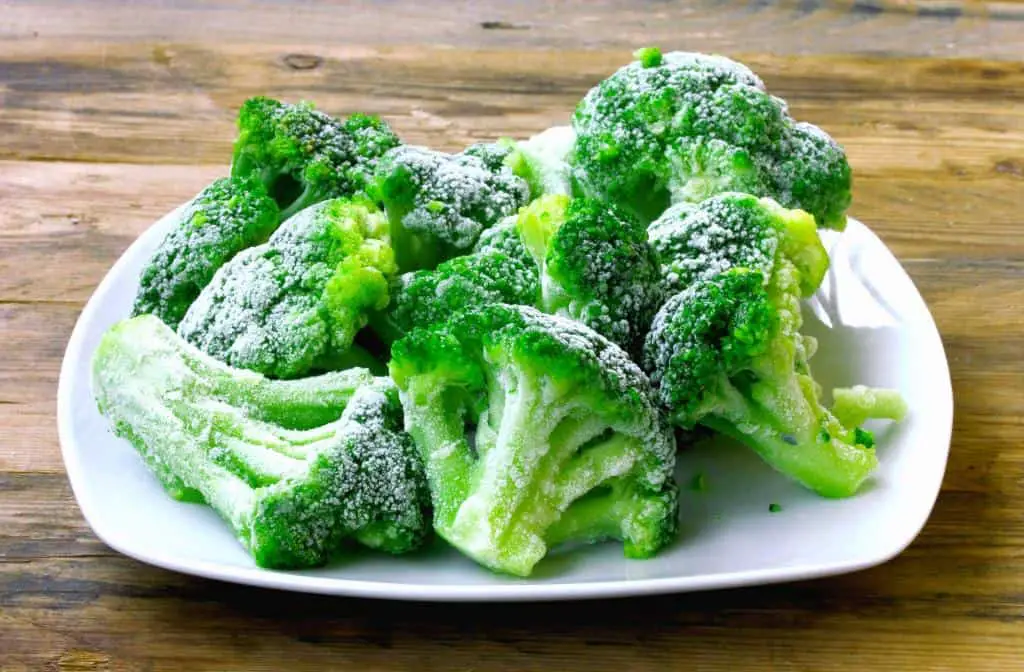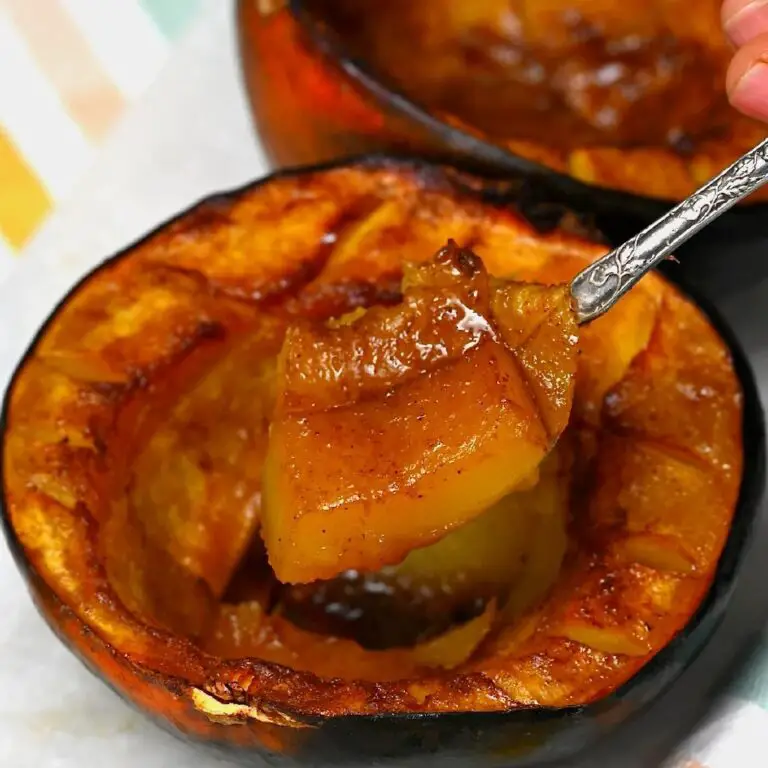How To Make Frozen Broccoli Not Soggy? Cooking To Perfect Textured

Broccoli is an excellent source of nutrition, and frozen broccoli is a convenient way to enjoy it year-round. However, improper cooking can result in a soggy, unappetizing texture.
Well, fear not, because today we’re diving into the secrets of achieving that perfect, delightful texture that will make your taste buds dance with joy! We all know that frozen broccoli can be a bit tricky to handle in the kitchen. With a few simple techniques and some culinary wizardry, we’ll transform your frozen florets into a mouthwatering masterpiece.
In this article, we’ll explore the science behind frozen broccoli texture, how to choose high-quality frozen broccoli, and techniques for preparing and cooking it to perfection. We’ll also answer common questions and provide tips for storing leftovers and incorporating frozen broccoli into various recipes.
Why Does Frozen Broccoli Become Soggy?
Frozen broccoli, despite its many nutritional benefits, can be a challenge to cook without ending up with a soggy mess. The culprit behind the dreaded sogginess lies in the vegetable’s high water content. When broccoli is frozen, the water inside it expands, which can lead to a loss of texture and result in messiness when thawed.
It’s important to note that if you come across frozen broccoli that appears clumped together, it may have been thawed and refrozen during its journey to the store. This can contribute to the potential sogginess of the vegetable. When purchasing frozen broccoli, look for packages that show no signs of thawing or refreezing to ensure the best possible texture.
While it may be tempting to defrost the broccoli to speed up the cooking process, doing so can exacerbate the sogginess issue. Thawed broccoli tends to release excess moisture, further contributing to its undesirable texture. Therefore, it is recommended to cook frozen broccoli in its frozen state.
Choosing High-Quality Frozen Broccoli
Not all frozen broccoli is created equal. The key to achieving optimal texture lies in selecting the right product from the freezer aisle. Here are some tips for selecting frozen broccoli with optimal texture:
- Choose frozen broccoli that has been flash-frozen, which helps to preserve its texture and nutrients.
- Avoid packages with signs of freezer burn, such as ice crystals or a dry, discolored appearance.
- Look for broccoli that is bright green in color, indicating that it was harvested at peak freshness. Vibrant color is an excellent indicator of the broccoli’s freshness and quality. Avoid packages with discolored or yellowing florets, as this may suggest that the broccoli was harvested past its prime or has been stored improperly.
- Texture is another crucial aspect to consider. Inspect the frozen broccoli for any signs of ice crystals or excessive frost. While a thin layer of frost is normal, an excessive amount can indicate that the broccoli has been improperly stored or thawed and refrozen. Such mishandling can lead to a loss of texture and result in a soggy final product. Choose packages with minimal frost and intact florets for the best texture.
- Packaging is also an important factor to keep in mind. Opt for frozen broccoli that comes in a resealable bag or airtight container. This type of packaging helps maintain the quality of the broccoli by preventing freezer burn and exposure to air. Freezer burn, which manifests as grayish-white patches on the broccoli’s surface, can negatively impact the texture and taste of the vegetable. By selecting well-packaged frozen broccoli, you can ensure that it retains its texture and flavor throughout its time in the freezer.
- Consider the size of the frozen broccoli florets. Different packages may offer varying sizes, ranging from bite-sized pieces to larger florets. The size you choose depends on personal preference and the intended use of the broccoli. Smaller florets are convenient for quick and even cooking, while larger florets are suitable for dishes where you want more substantial pieces of broccoli. Consider your recipe requirements and select the size that best suits your needs.
- Finally, check the expiration date and avoid packages that have been in the freezer for an extended period.
Thawing Frozen Broccoli Correctly
Thawing frozen broccoli correctly is crucial for preserving its texture. Here are some best practices for thawing frozen broccoli:
- Place the frozen broccoli in a colander and rinse it under cold water to remove any ice crystals.
- Allow the broccoli to drain thoroughly, removing as much excess moisture as possible.
- Alternatively, you can thaw frozen broccoli by placing it in the refrigerator overnight.
- Avoid thawing frozen broccoli in the microwave, as this can result in uneven thawing and excess moisture.
Preparing Frozen Broccoli for Cooking
Before cooking frozen broccoli, it’s essential to prepare it properly. Here are some techniques for preparing frozen broccoli for cooking:
- Remove any ice crystals or freezer burn by rinsing the broccoli under cold water.
- Drain the broccoli thoroughly, using a paper towel or clean kitchen towel to remove excess moisture.
- For best results, blanch or steam the broccoli briefly before cooking to reduce its cooking time and enhance its texture.
Cooking Tips to Enhance the Texture
Here are a few additional tips to enhance the texture of your frozen broccoli:
- Avoid overcooking: Be mindful of the cooking time to prevent overcooking the broccoli. Overcooked broccoli can become mushy and lose its texture.
- Maintain vibrant color: To help the broccoli retain its vibrant green color, blanch it in boiling water for a minute before using any of the cooking methods mentioned above. This step helps preserve the color and texture.
- Use a hot pan: When stir-frying or sautéing frozen broccoli, make sure the pan is hot before adding the broccoli. This ensures that the broccoli cooks quickly and retains its texture.
- Add flavors: Experiment with different seasonings, herbs, and spices to enhance the flavor of your cooked broccoli. Lemon zest, garlic powder, cayenne pepper, or a sprinkle of Parmesan cheese can add a delightful twist to your dish.
- Don’t overcrowd the pan: Whether you’re roasting or stir-frying frozen broccoli, make sure not to overcrowd the pan. Overcrowding can lead to uneven cooking and prevent the broccoli from achieving a nice texture.
- Steaming is an excellent way to cook frozen broccoli while preserving its crunchiness. Steam the broccoli for 3-5 minutes until it is bright green and just tender.
- Stir-frying or roasting can also help to retain some of the broccoli’s texture. Heat oil in a pan or on a baking sheet, add the broccoli, and cook for 5-7 minutes until it is lightly browned and crisp.
Timing and Temperature Considerations
Timing and temperature are crucial factors when cooking frozen broccoli. Here are some guidelines to keep in mind:
- Follow the cooking instructions on the package, but be mindful of overcooking, which can result in a soggy texture.
- Adjust cooking temperatures based on your desired texture. For example, steaming broccoli at a lower temperature for a longer period can result in a crunchier texture.
- Check the broccoli frequently while cooking to ensure that it is cooked evenly and to your desired texture.
Enhancing Flavor and Texture with Seasonings and Sauces
Seasonings and sauces can enhance the flavor and texture of your frozen broccoli. Here are some ideas for adding flavor and texture:
- Sprinkle your cooked frozen broccoli with a pinch of sea salt or garlic powder for a simple and delicious seasoning.
- Toss the broccoli with a drizzle of olive oil and a squeeze of lemon juice to brighten the flavors and add a hint of acidity.
- Experiment with different herbs and spices, such as thyme, rosemary, paprika, or cumin, to create unique flavor profiles.
- Consider making a light sauce or dressing to accompany your broccoli. A simple combination of Greek yogurt, lemon zest, and a touch of honey can add creaminess and tang to your dish.
Remember to balance the flavors without overpowering the natural taste of the broccoli leaves. The goal is to enhance the texture while complementing the vegetable’s inherent qualities.
Properly Storing Leftover Broccoli
If you have leftover cooked broccoli, proper storage is crucial to maintaining its texture. Follow these guidelines:
- Allow the cooked broccoli to cool completely before storing it.
- Place the cooled broccoli in an airtight container or zip-top bag.
- Store broccoli in the refrigerator for up to three days.
- When reheating, avoid methods that introduce additional moisture, such as microwaving. Instead, consider lightly steaming or sautéing the broccoli to retain its texture.
Properly stored and reheated broccoli can still retain its desirable texture, making it a versatile ingredient for future meals.
Using Frozen Broccoli in Different Recipes
Frozen broccoli can be a versatile ingredient in various recipes. Here are some ideas for incorporating it:
- Add frozen broccoli to soups and stews during the last few minutes of cooking for added texture and nutrition.
- Use it as a topping for homemade pizzas or flatbreads. Simply thaw and drain the broccoli, then sprinkle it over the dough along with your other desired toppings.
- Incorporate frozen broccoli into stir-fries by adding it to the pan along with other vegetables and protein sources. Its vibrant color and crunchiness can elevate the dish.
- Experiment with casseroles and baked dishes. Thaw the broccoli and combine it with other ingredients, such as cheese, pasta, or chicken, before baking it in the oven.
The possibilities are endless when it comes to using frozen broccoli in recipes. Be creative and explore different flavor combinations to suit your taste.
Tips for Meal Planning and Batch Cooking with Frozen Broccoli
Meal planning and batch cooking can make mealtimes more efficient and convenient. Here are some tips for incorporating frozen broccoli into your meal prep:
- Plan your meals in advance, considering recipes that can incorporate frozen broccoli.
- Cook a large batch of frozen broccoli and portion it into individual containers for easy access during mealtime.
- Freeze cooked broccoli in separate freezer-safe bags or containers, allowing you to easily add it to soups, stir-fries, or pasta dishes as needed.
By incorporating frozen broccoli into your meal planning and batch cooking, you can ensure that you always have a versatile and nutritious ingredient ready to use.
Conclusion
With the right techniques and a little extra care, you can make frozen broccoli taste just as delicious as fresh broccoli. By properly thawing, draining, and choosing the right cooking methods, you can avoid the issue of sogginess and achieve the perfect texture. Whether you prefer steaming, roasting, stir-frying, or microwaving, these tips will help you make your frozen broccoli a delightful addition to any meal. Enjoy the vibrant color, retain the nutrients, and savor the satisfying crunch
FAQs
Can I refreeze leftover cooked broccoli?
It is generally safe to refreeze leftover cooked broccoli if it has been handled and stored properly. However, keep in mind that each time you freeze and thaw broccoli, its texture may be slightly affected. For the best quality, it is recommended to consume the leftover cooked broccoli within a few days.
How long does frozen broccoli last in the freezer?
When stored in a freezer-safe container or bag, frozen broccoli can last for approximately 8 to 12 months. However, for the best quality, it is recommended to consume it within the first 6 to 8 months.
Does blanching frozen broccoli before cooking make a difference in texture?
Blanching frozen broccoli before cooking can make a noticeable difference in its texture. Blanching helps to preserve the broccoli’s vibrant color, retain its crispness, and reduce cooking time. It also helps to deactivate enzymes that may affect the texture and flavor over time.
Are there any alternative cooking methods for frozen broccoli?
While steaming is a popular method for cooking frozen broccoli, you can also try other techniques. Roasting frozen broccoli in the oven at a high temperature can result in a slightly crispy texture and a caramelized flavor. You can also sauté or stir-fry frozen broccoli to retain its crunchiness while adding additional flavors.
Can I freeze fresh broccoli myself for better texture?
Yes, you can freeze fresh broccoli yourself to preserve its texture. Start by blanching the broccoli in boiling water for a couple of minutes, then immediately transfer it to an ice bath to cool. Drain the blanched broccoli thoroughly, pat it dry, and store it in freezer-safe bags or containers. Freezing fresh broccoli helps to maintain its crispness and nutrients until you’re ready to use it.
Are there any health benefits to consuming frozen broccoli compared to fresh?
Frozen broccoli can be just as nutritious as fresh broccoli. Freezing helps to preserve the nutrients, such as vitamin C and fiber, as well as the overall quality of the vegetable. In some cases, frozen broccoli may even retain more nutrients than fresh broccoli that has been stored for a long time. However, it’s important to choose high-quality frozen broccoli and cook it properly to maximize its nutritional benefits.






